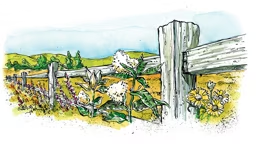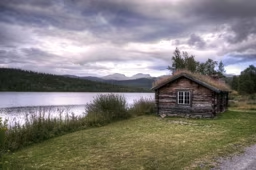All things considered, squirrels and their ilk can indeed make a mess of a chimney, but it's the buildup of a sticky, combustible substance called creosote that's the real villain.
Creosote is the black stuff that forms in the chimney as a byproduct of your cozy fires. It can appear as sticky, gooey muck, or as crusty bubbles, or even as a hardened sheen.
If you enjoy a fire – just one a month or one every day – you have creosote. Here's why: As your chimney carries away smoke and gases up into the relatively cooler part of the chimney, condensation occurs, and the resulting residue sticks to the sides of the chimney.
Those of you with a gas fireplace are not off the hook; any chimney can and will form creosote, including furnace vents – just to a lesser extent. Moreover, your gas fireplace chimney is just as likely to be home to a squirrel.
There's no simple rule about how often to clean a chimney, such as after 100 uses, or after every winter. The amount of creosote forming in your chimney is instead related to how your fire burns. For example, a smoky fire without enough oxygen makes more creosote than a hot fire with well-dried wood.
If you can, hire a certified chimney sweep to inspect, evaluate and clean your chimney. They're trained to recognize deteriorating conditions and venting problems, they know local codes and standards, and they can give you a heads-up notice when it's time to make repairs. Expect to pay around $150 to $250 for an annual cleaning.
The Chimney Safety Institute of America (CSIA) is the only certifying organization in the U.S. You can find a sweep in your area on the institute's website, www.csia.org.
Unfortunately, certified sweeps may be hard to find in remote locations. In which case, ask for references and a history from an uncertified sweep. Ask what the sweep will do during the inspection and cleaning – what services will be performed. Ask if he or she carries liability insurance, and as always, check with a consumer reporting bureau, such as the Better Business Bureau or the state attorney general's office.
The National Fire Protection Association recommends that chimneys, fireplaces and vents be inspected yearly. Planning for a spring or summer inspection is the easiest for all involved – no snowdrifts to climb, no frozen fingers and such.
So add "Clean the Chimney" to the maintenance list. Not particularly exciting, but the alternative can be a little too exciting.
 Fotosearch
Fotosearch 






